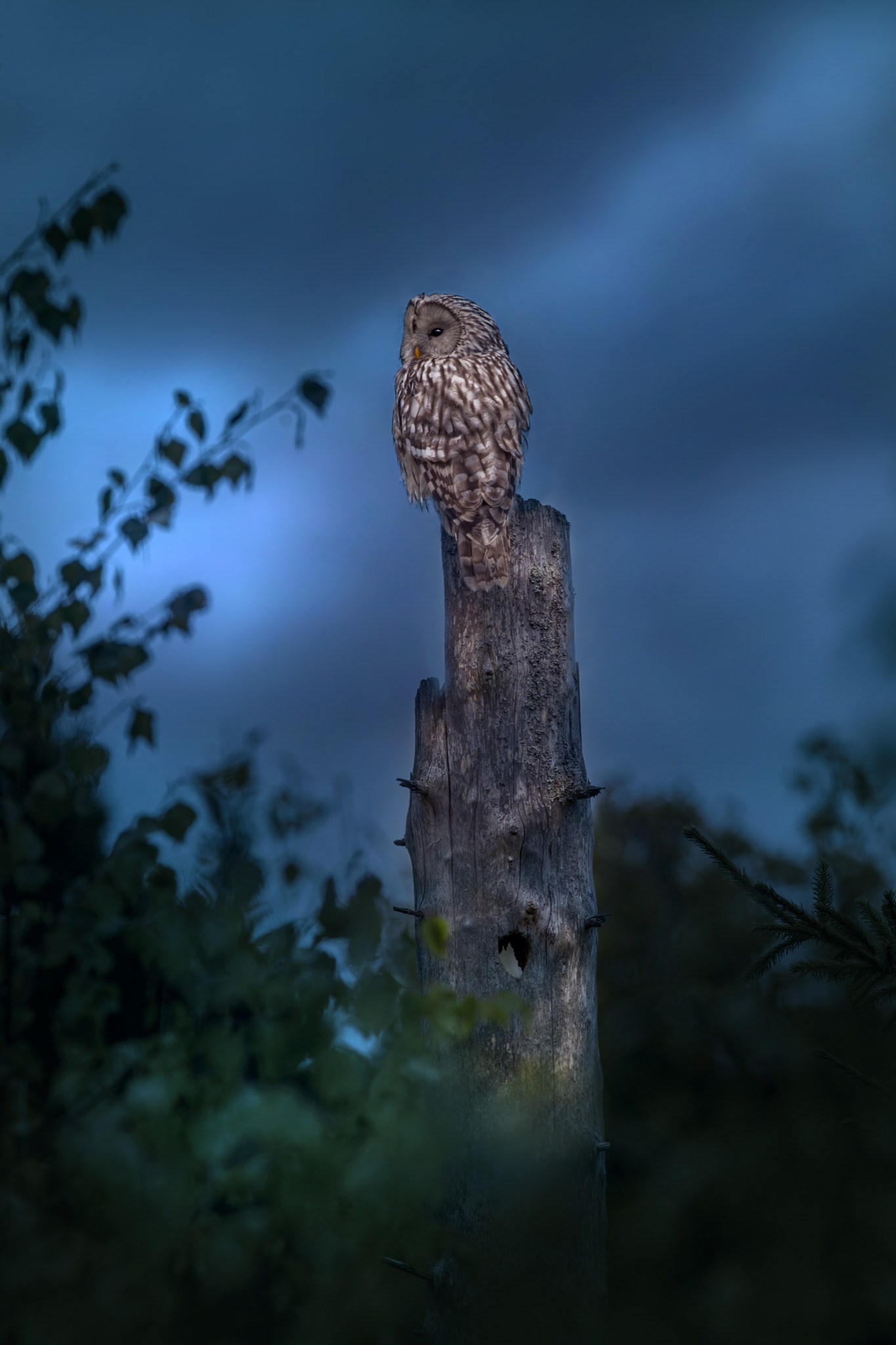
The Ural Owl (Strix uralensis) is a medium to large-sized owl species native to Europe and Asia, known for its distinctive rounded head and piercing stare. Here is an overview of this fascinating bird:
Description
- Appearance: The Ural Owl has a rounded head with no ear tufts and large, dark eyes set in a pale facial disc. Its plumage is generally light grey or buff with dark streaks, which provides excellent camouflage against the bark of trees. The wings are long and rounded, and the tail is comparatively long for an owl, often making it look larger in flight.
- Size: The Ural Owl measures about 50–60 cm in length, with a wingspan of 110–134 cm. It weighs between 500 to 1300 grams, with females generally larger than males.
- Voice: It has a distinctive hooting call, often described as “hoo-hoo-hoo,” which can be quite loud and carries over long distances, especially during mating season.
Distribution and Habitat
- Geographical Range: The Ural Owl’s range extends from Scandinavia and Central Europe through Eastern Europe and across Siberia to Japan. It can be found in countries like Sweden, Finland, Russia, Poland, and Japan.
- Preferred Habitats: It typically inhabits mixed or coniferous forests with old trees, especially those near clearings, wetlands, or open areas where it can hunt more efficiently. It is particularly fond of mature forests with plenty of nesting sites and a good prey base.
Behavior and Ecology
- Diet: Ural Owls primarily feed on small mammals, especially voles, mice, and shrews, but they also hunt birds, frogs, and large insects. They are opportunistic hunters and will adapt their diet based on the available prey in their territory.
- Hunting Style: These owls hunt mainly by perching silently and scanning the ground for movement. Once prey is detected, they swoop down with silent flight to capture it.
- Activity: They are mainly nocturnal but can also be seen hunting during the day, especially when they have young to feed.
Reproduction
- Breeding Season: The breeding season for Ural Owls typically begins in late winter to early spring (February to March).
- Nesting: Ural Owls do not build their own nests. Instead, they use natural cavities in trees, abandoned nests of other large birds, or specially designed nest boxes. They prefer locations with good cover and a clear view of the surrounding area.
- Clutch Size: The female lays 2-4 eggs, which she incubates for about 27-34 days. During this period, the male hunts and brings food to the nest.
- Chick Development: After hatching, the chicks are cared for by both parents. They fledge at about 4-5 weeks old but remain dependent on their parents for food for several months.
Conservation Status
- IUCN Status: The Ural Owl is currently classified as “Least Concern” by the IUCN, but its populations are locally threatened in some areas due to habitat loss, deforestation, and human disturbances.
- Conservation Efforts: Conservationists work to protect mature forests, reduce logging in sensitive areas, and install nest boxes to support Ural Owl populations.
Interesting Facts
- Defensive Behavior: Ural Owls are known for their fierce defensive behavior when their nest is threatened. They will actively attack intruders, including humans, with powerful strikes using their talons.
- Symbolism: In some cultures, the Ural Owl is seen as a symbol of wisdom and protection, while in others, it is considered a harbinger of death due to its nocturnal nature and haunting calls.
Importance in Ecosystem
- Role as a Predator: The Ural Owl plays a crucial role in controlling the populations of small mammals, helping maintain a balanced ecosystem.
- Indicator Species: As a top predator in its habitat, the presence of Ural Owls indicates a healthy forest ecosystem with sufficient prey and minimal human disturbance.
The Ural Owl, with its striking appearance and vital ecological role, is an important species for forest health and biodiversity.
Visited 888 times, 4 visit(s) today
Views: 1457
Subscribe to the newsletter:
